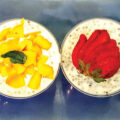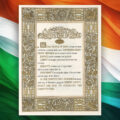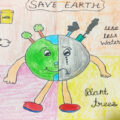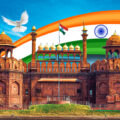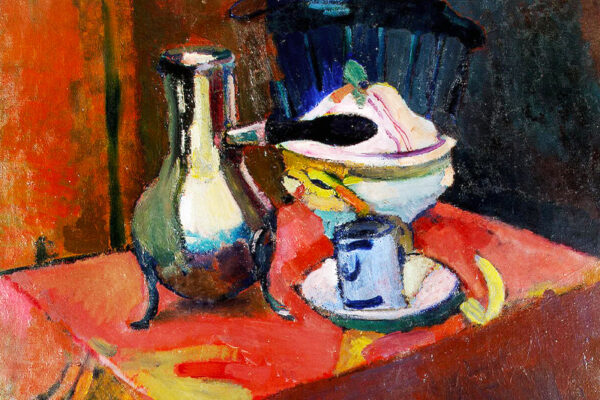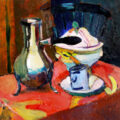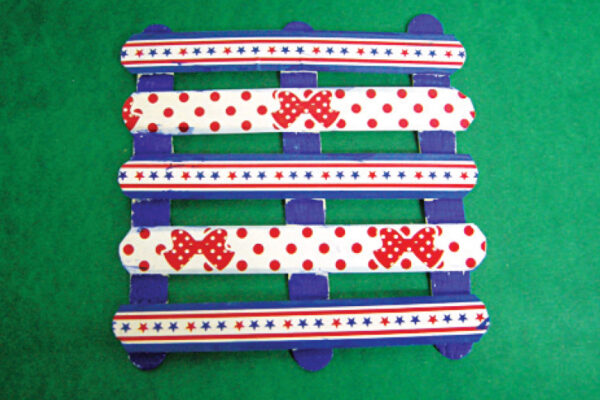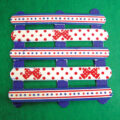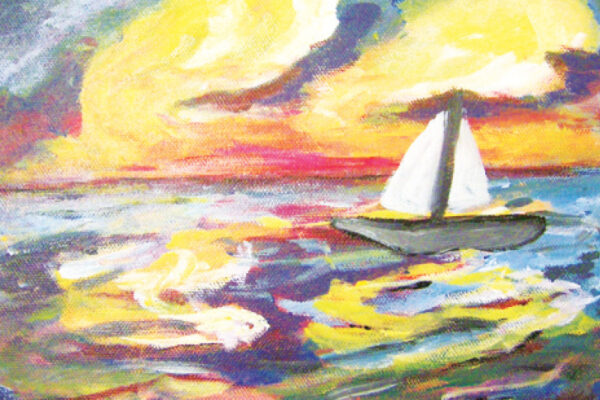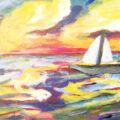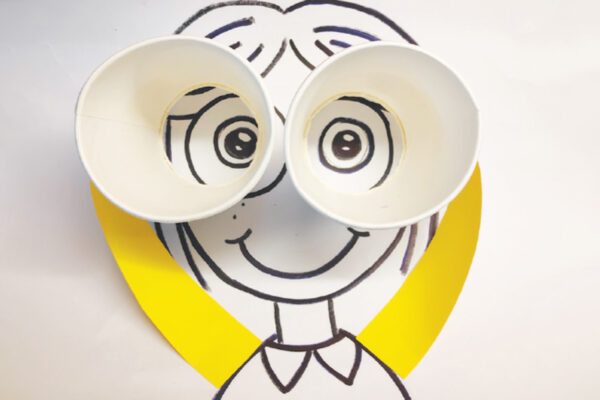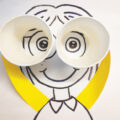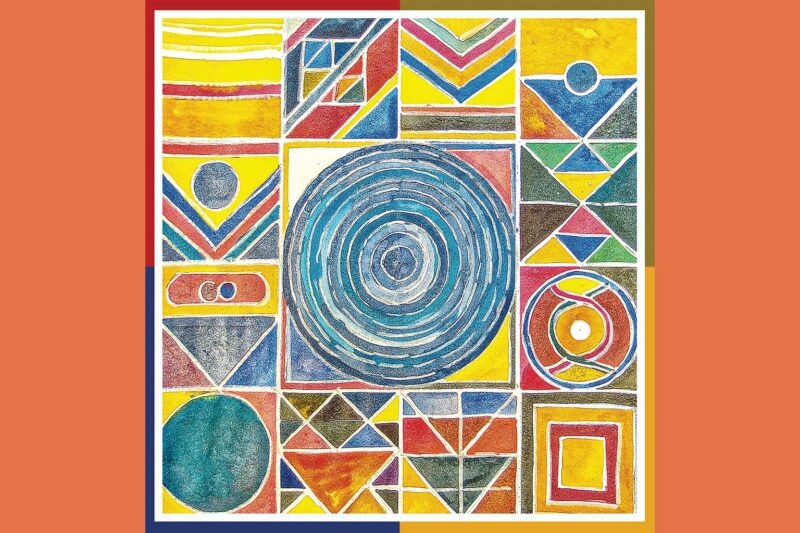
SH Raza’s works are mainly abstracts in oil or acrylic, with a very rich use of colour. Most of his works have icons from Indian cosmology as well as Indian philosophy. Raza was known for his geometric style of painting. His Bindu, Surya and Naga series brought him worldwide recognition. He passed away in 2016, at the age of 94 years.
Here’s how you can make your own version of one of the paintings from Raza’s Bindu series on paper.
NOTE: Reproducing Raza’s works will require complete precision, so make sure you have all your equipment and material ready before you begin.
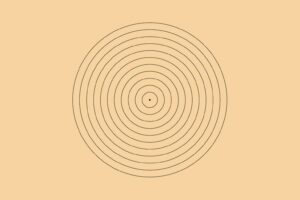
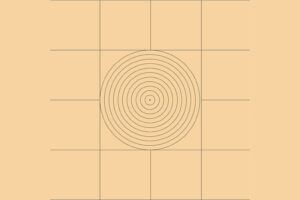
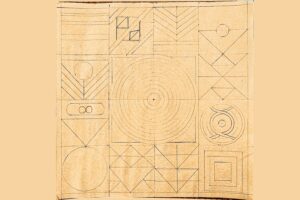
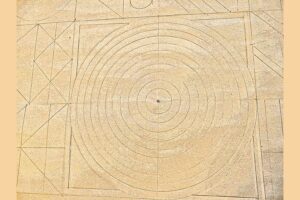
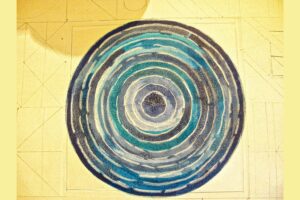
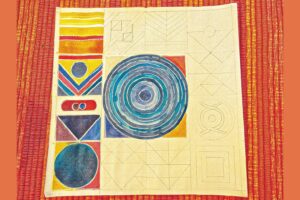
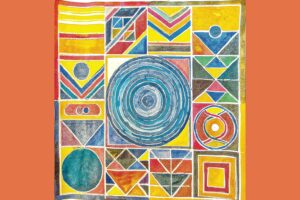
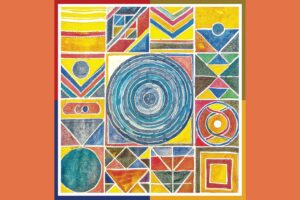
Previous
Next
MATERIALS
- Square sheet of paper measuring 16×16 inches
- Ruler
- Pencil
- Compass
- White wax crayon
- Waterproof drawing ink
- Paintbrushes
METHOD
- Take a square sheet of paper and draw a 1cm border around it. Find the centre. Using a sharp pencil and compass, draw a circle of 8 inches diameter from the centre of the sheet. Then draw a series of concentric circles.
- Draw 4 parallel lines on all 4 sides of the circle such that the lines touch the outside of the circle (the circumference). Draw 2 intersecting lines at the centre of the page. Draw these lines only on the outside of the circle. You will get 12 squares around the circle.
- Make a different design in each square. You can fill your squares with slanting or parallel lines, circles, squares, triangles or rectangles. You can also follow the patterns shown in the picture. Some squares can have a single circle while some could also have zigzag lines. Fill all the squares with different geometric patterns.
- Once you’re done drawing, sharpen the white wax crayon and outline every part of your drawing with it. Go over your pencil lines and press your white crayon firmly. You can also give a few broken lines, if you want, for a unique effect. Use the ruler where necessary. Where you want prominent lines, press the crayon harder on the sheet.
- Raza’s works mostly used primary colours and black and white. However, do not use pure black; mix it with other colours. Mix each colour with water for it to resist the wax crayon applied on the paper. While painting, don’t go over the same area twice as the wax won’t resist the paint.
- Follow the geometry of the work and paint the artwork section-wise. Mix the colours and paint neatly. You can use white in some patches too.
- Use the wax crayon to your advantage and combine a few patches if necessary.
- Finally, paint the borders.
Dipika Gurnaney studied at the Sir JJ School of Fine Arts and is a recipient of a scholarship from the Pont Aven
School of Contemporary Art in France. Dipika has been teaching children art since 2002.



